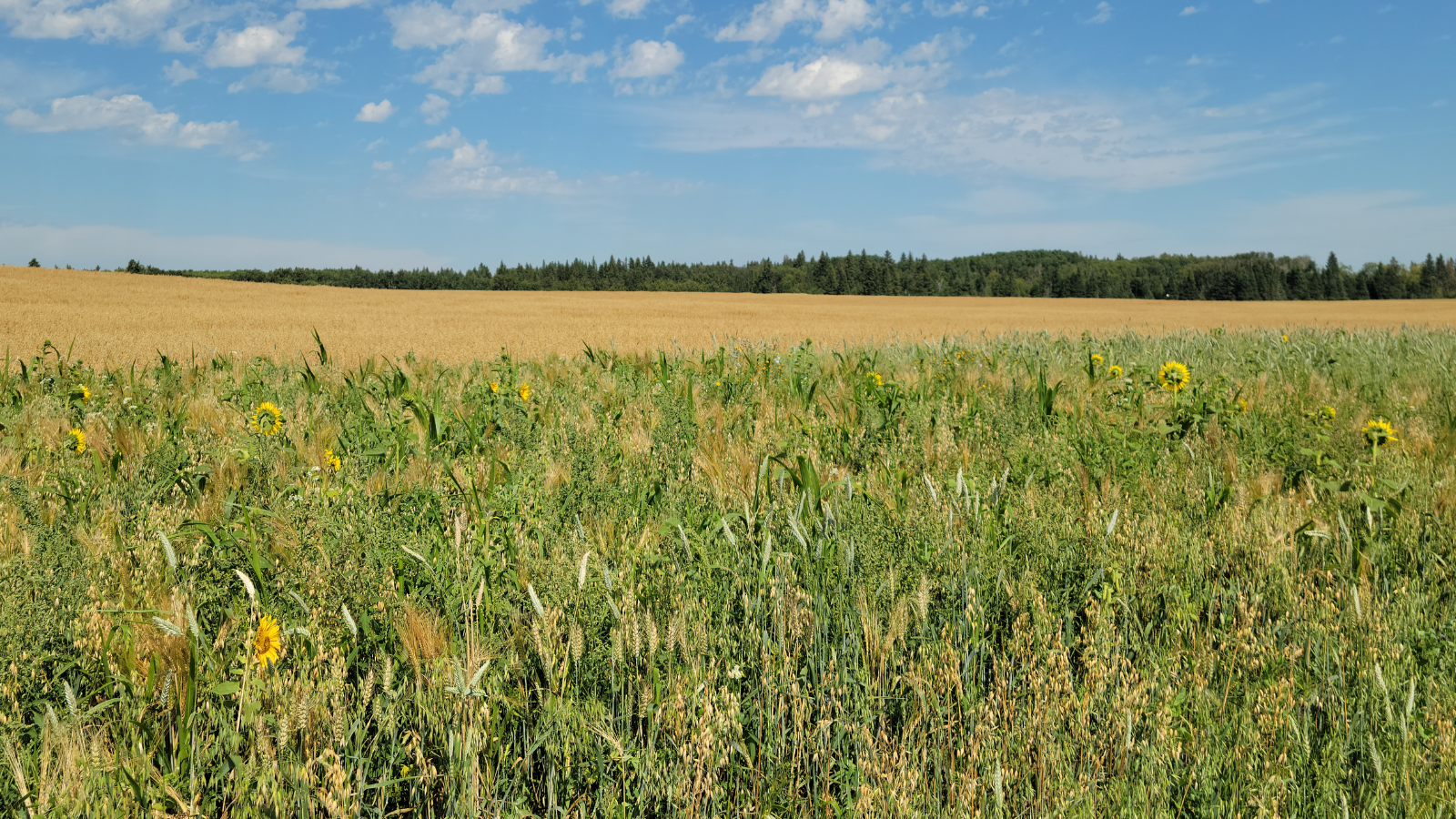Across from the Muskeg Lake Food Forest, a new demonstration site is taking shape as a space for community-based learning. Its main goal is to showcase regenerative agricultural practices in a way that’s accessible to everyone, including large-scale producers, ranchers, land managers, small-scale community gardeners, students, and community members. The site encourages exploration of both conventional and regenerative farming practices. By creating a shared language around agriculture, it encourages connection, experimentation, and hands-on learning.
The site has been conventionally farmed for decades. In 2024, it was planted with canola and in 2025, most of the field was seeded to oats with the exception of the portion reserved for educational demonstration. This demonstration spans roughly 275 metres east to west and 45 metres north to south and is dedicated to exploring and observing regenerative farming practices. Located between two large wetlands, the site provides opportunities to learn about land stewardship and restoration approaches grounded in both local landscape conditions, and community values.
In 2023, 12 species were selected and a total of 700 trees were planted along the roadside of the demonstration site. These form an eco-buffer that functions as a windbreak and demonstrates the ecological and cultural value of eco-buffers/shelterbelts.
North of the eco-buffer, over 1,000 potatoes were planted using two different methods: traditional in-ground and no-dig techniques. With no irrigation system, this offers a great opportunity to compare practices under water-limited conditions.
Demonstration Plots
In 2025, part of the site was seeded into seven demonstration strips. These plots offer visitors the opportunity to observe and learn about a range of regenerative practices and the benefits they provide. This variety of crops allows visitors to observe how diverse plantings can improve soil health and build resilience.
Demonstration Plots include:
Corn and soybean planted in alternating rows to show row-intercropping
Mixed-intercropping plots include combinations like pea and oat, pea and flax, and oat with italian ryegrass
Three plots featuring annual cover crop blends, including the Covers & Co Blend and the SERF Pollinator Blend.
In addition, approximately 1,000 trees and shrubs were planted in 2025 along the outskirts of the main demonstration site, bordering the two adjacent wetlands. Species included a variety of willows, white spruce, poplar, and red-osier dogwood. These plantings support wildlife habitat, promote biodiversity, and serve as a buffer to capture runoff before it reaches the water, helping improve water quality.
Looking Ahead
Planned future additions include:
Single-species crops for identification and comparison
Perennial pollinator strips
Expanded ecological buffer zones
Informational signage to support self-guided learning
A site tour is planned for September and will offer an opportunity to gather feedback.
A Place to Share and Grow
This demonstration site is designed to support learning for everyone, from experienced farmers to young students. It combines Indigenous and western agricultural knowledge to support knowledge exchange, cultural connection, and practical learning about beneficial land management practices.
Stephanie Le Courtois, a master’s student from the University of Saskatchewan and a member of the Bridge to Land Water Sky team, is studying how spaces like this contribute to learning, community well-being and cultural connection. Stephanie’s research focuses on the educational role these kinds of projects play and how they can strengthen relationships between people, land, water, and sky.

